THE DOGRUN
a place to share ideas
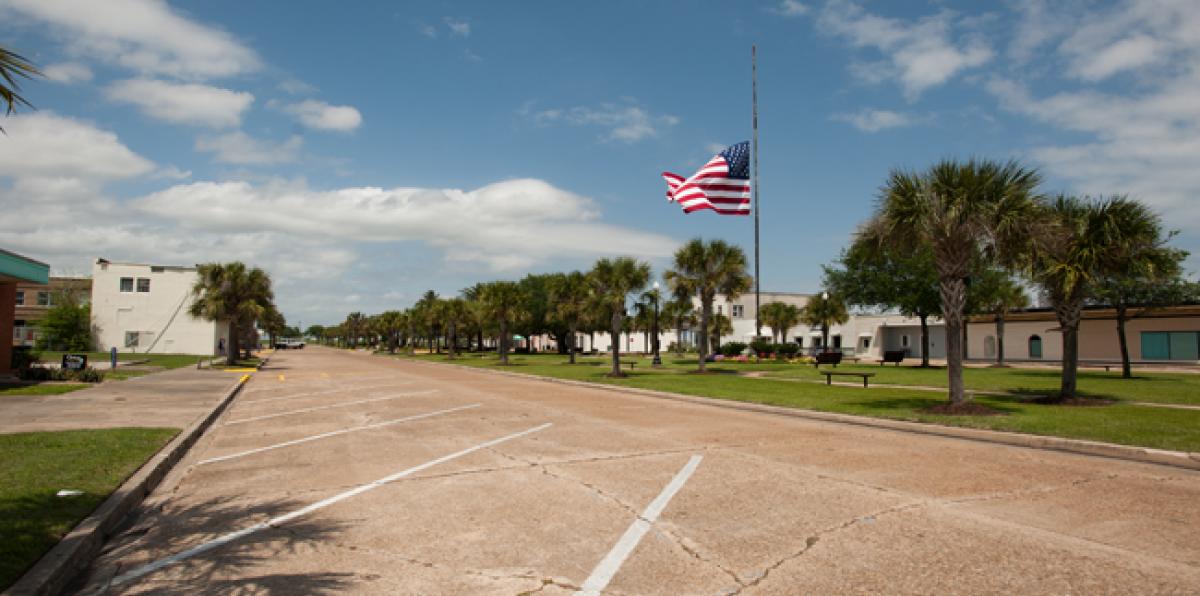

Reinvigorating Our Coastline
Posted by cleamon on 5/27/13 at 11:16 am
The Texas Coast is no stranger to the beatings of nature. The warm, shallow waters of the Gulf Coast make it primal territory for hurricanes to form and gain power. While the most recent coastal devastation was Hurricane Ike in 2008, rebuilding towns can take a decade or more. What Texans have seen instead is an increase in tropical storms and hurricanes, fickle industries, and a an abandonment of coastal areas.
According to the National Oceanic and Atmospheric Administration's National Hurricane Center, there were 21 documented hurricanes in the Gulf during the 20th century. In the first ten years of the 21st century, there have been 12. Dr. Kerry A. Emanuel, Professor of Atmospheric Science at the Massachusetts Institute of Technology, found that the duration and intensity of hurricanes have increased 50% since the 1970's and directly correspond with an increase in tropical sea surface temperature. While larger areas like Corpus Christi and Galveston fight with great resilience to stay in their homes, other areas like Freeport seem to have fallen to the wayside.
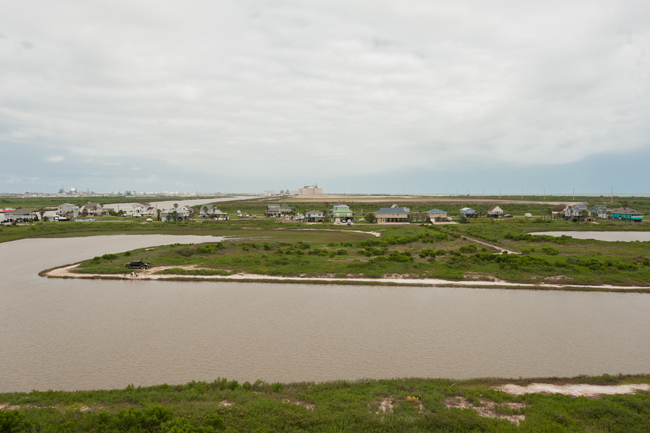

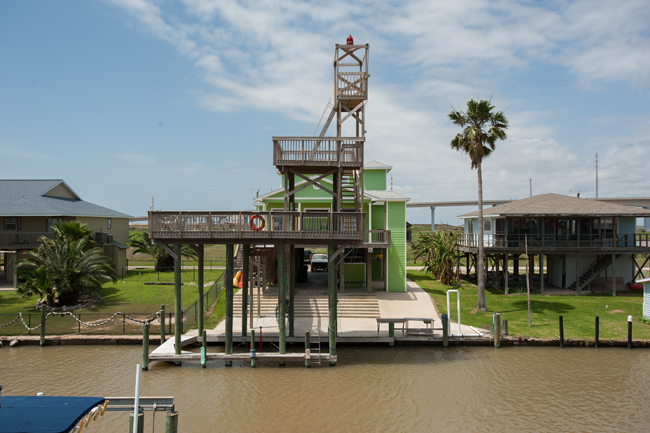 Last month, previous L|Fer Lizzie Marrin and I explored the area of Freeport and Quintana Island. Like many Texas coastal towns, this area was established in the first quarter of the 1800's. Under the name of Velasco, Stephen F. Austin (the "Father of Texas") officially developed the town as a portal for settlers and interim President David Burnet later deemed it the first capital of the Republic of Texas in 1836. The area economically flourished later as a retreat for the wealthy and as plantation land, followed by an emptying out after the U.S. Civil War. Population shifted from 50 to 3,000 by 1900 before the Galveston Hurricane forced another population drop to 1,000.
In 1912, the Freeport Sulphur Company founded another town on the opposite side of the Brazos river. The Brazos became a major shipping port during WWII, bringing Dow Chemical Company into Freeport in 1939 to build their largest integrated operations facility in the country. With the increased production from war and Dow's presence, Freeport began to boom. As Velasco's population had dropped to 400 by the Great Depression, the two towns merged under the City of Freeport in 1957. Since then, this coastal town has become a major hub for chemical business with the addition of BASF and Shintech (with a Dole "Fresh Fruit" factory snuggly set inbetween them). In 2005, an expansive terminal brought liquified natural gas (LNG) into the area and the Eagleford Shale in South Texas has set Freeport up to become one of the most significant export locations for LNG (a very small part of which is seen in the background below).
Last month, previous L|Fer Lizzie Marrin and I explored the area of Freeport and Quintana Island. Like many Texas coastal towns, this area was established in the first quarter of the 1800's. Under the name of Velasco, Stephen F. Austin (the "Father of Texas") officially developed the town as a portal for settlers and interim President David Burnet later deemed it the first capital of the Republic of Texas in 1836. The area economically flourished later as a retreat for the wealthy and as plantation land, followed by an emptying out after the U.S. Civil War. Population shifted from 50 to 3,000 by 1900 before the Galveston Hurricane forced another population drop to 1,000.
In 1912, the Freeport Sulphur Company founded another town on the opposite side of the Brazos river. The Brazos became a major shipping port during WWII, bringing Dow Chemical Company into Freeport in 1939 to build their largest integrated operations facility in the country. With the increased production from war and Dow's presence, Freeport began to boom. As Velasco's population had dropped to 400 by the Great Depression, the two towns merged under the City of Freeport in 1957. Since then, this coastal town has become a major hub for chemical business with the addition of BASF and Shintech (with a Dole "Fresh Fruit" factory snuggly set inbetween them). In 2005, an expansive terminal brought liquified natural gas (LNG) into the area and the Eagleford Shale in South Texas has set Freeport up to become one of the most significant export locations for LNG (a very small part of which is seen in the background below).
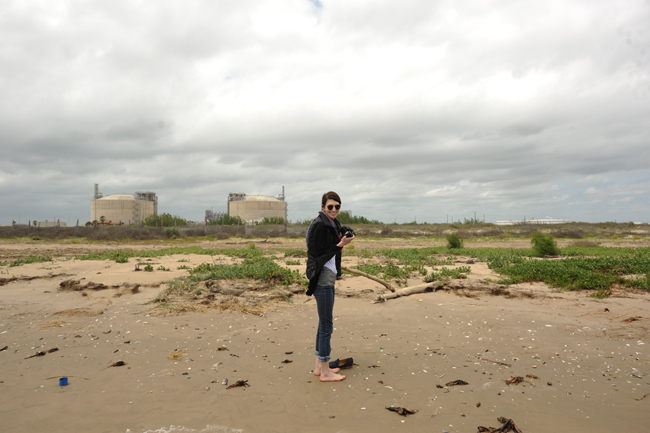
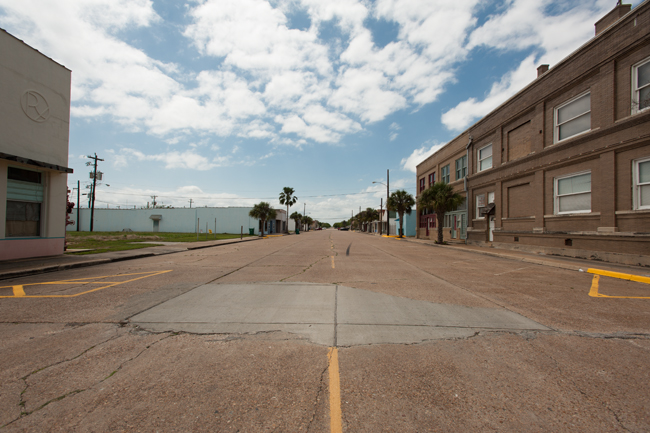
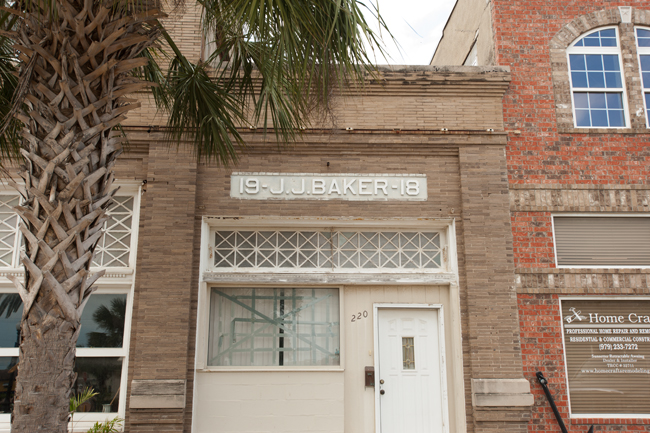
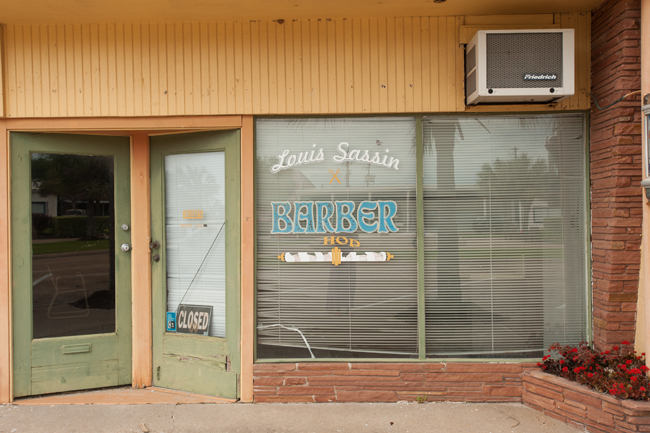

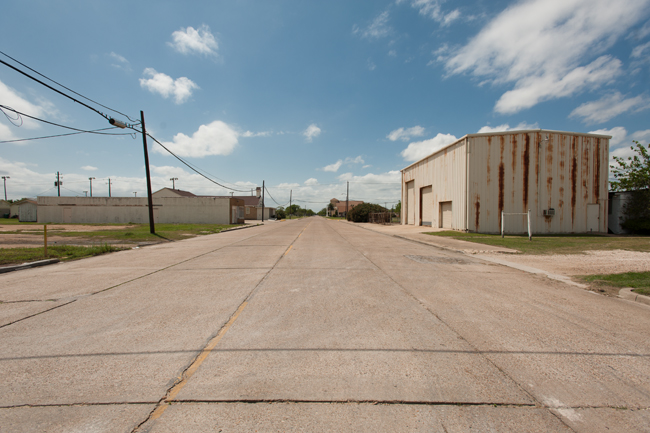
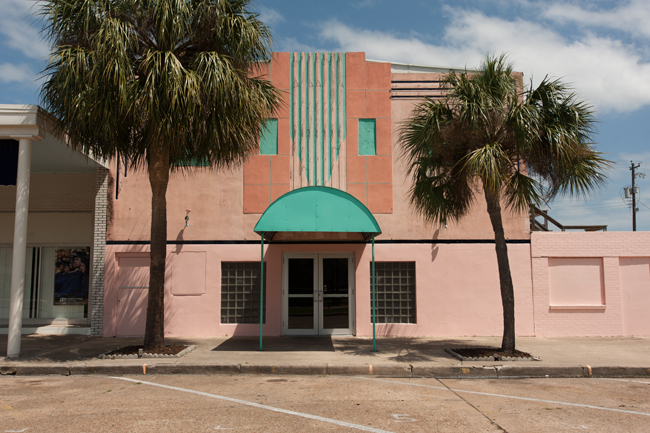
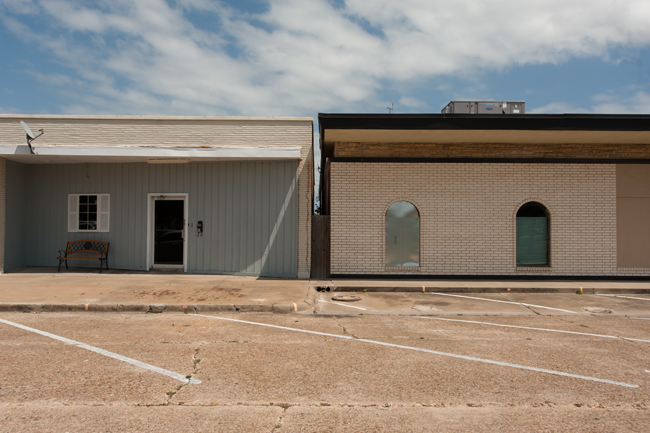
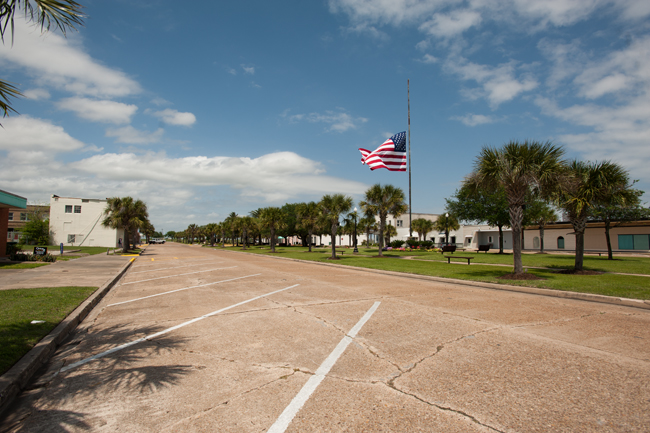 Essentially, Freeport's entire workforce is involved in these chemical industries. Without economic diversity and regionally appropriate architecture, the town is still at risk of more exodus with the next hurricane or market shift. Despite efforts in 2000 to "beautify Main Street" with the arrival of then First Lady Laura Bush, the town remains quiet and empty. It might as well exist for Truman Burbank, by the looks of it - the population of 12,000 was nowhere to be found on late Sunday afternoon. A few people stood on their front lawns, staring. All the while, Freeport's wild history is documented by the architecture of Main Street. A mix of typologies sit empty and for sale, with sparse businesses filling in random voids in old banks and barbershops. It begs the question: is architecture irrelevant without an economy to support it, or can it instead be the instigator that helps promote development in a city?
What part can architecture play in creating a more diverse economy and building regionally appropriate structures that withstand the increasingly dangerous force of nature?
We can look to Hargreaves Associates and Lake Flato's Destination Bayfront in Corpus Christi, instigated by a group of residents who are eager to see a stronger community. The project's structure is based on shed forms with perforated metal windscreens and vegetation to create buffers from powerful ocean gusts, embracing the reality of a harsh-weather environment of drought, heavy salt content, wind, and rain. By creating this bayfront, citizens hope to create a hub of recreational, social, and economic activity for residents and reinvigorate a dying, oil-based coastal town.
Essentially, Freeport's entire workforce is involved in these chemical industries. Without economic diversity and regionally appropriate architecture, the town is still at risk of more exodus with the next hurricane or market shift. Despite efforts in 2000 to "beautify Main Street" with the arrival of then First Lady Laura Bush, the town remains quiet and empty. It might as well exist for Truman Burbank, by the looks of it - the population of 12,000 was nowhere to be found on late Sunday afternoon. A few people stood on their front lawns, staring. All the while, Freeport's wild history is documented by the architecture of Main Street. A mix of typologies sit empty and for sale, with sparse businesses filling in random voids in old banks and barbershops. It begs the question: is architecture irrelevant without an economy to support it, or can it instead be the instigator that helps promote development in a city?
What part can architecture play in creating a more diverse economy and building regionally appropriate structures that withstand the increasingly dangerous force of nature?
We can look to Hargreaves Associates and Lake Flato's Destination Bayfront in Corpus Christi, instigated by a group of residents who are eager to see a stronger community. The project's structure is based on shed forms with perforated metal windscreens and vegetation to create buffers from powerful ocean gusts, embracing the reality of a harsh-weather environment of drought, heavy salt content, wind, and rain. By creating this bayfront, citizens hope to create a hub of recreational, social, and economic activity for residents and reinvigorate a dying, oil-based coastal town.
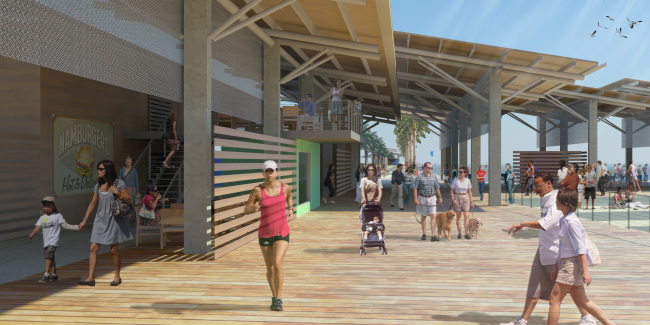 To read more about how Destination Bayfront will provide a better quality of life on the Texas Coast, visit their website at www.destinationbayfront.org or take a look at our Digital Pin-up on the Dogrun. The project can surely serve as a precedent for how to approach the many Texas coastal towns that have previously been victims of their own vulnerability to weather and economic shifts. While architecture plays an indispensable role in developing something efficient, sustainable, and enjoyable, the key element is the understanding and participation of people. Without the investment and willingness of a city's people, towns like Freeport might remain ghostly and never commit to discovering their potential.
To read more about how Destination Bayfront will provide a better quality of life on the Texas Coast, visit their website at www.destinationbayfront.org or take a look at our Digital Pin-up on the Dogrun. The project can surely serve as a precedent for how to approach the many Texas coastal towns that have previously been victims of their own vulnerability to weather and economic shifts. While architecture plays an indispensable role in developing something efficient, sustainable, and enjoyable, the key element is the understanding and participation of people. Without the investment and willingness of a city's people, towns like Freeport might remain ghostly and never commit to discovering their potential.


 Last month, previous L|Fer Lizzie Marrin and I explored the area of Freeport and Quintana Island. Like many Texas coastal towns, this area was established in the first quarter of the 1800's. Under the name of Velasco, Stephen F. Austin (the "Father of Texas") officially developed the town as a portal for settlers and interim President David Burnet later deemed it the first capital of the Republic of Texas in 1836. The area economically flourished later as a retreat for the wealthy and as plantation land, followed by an emptying out after the U.S. Civil War. Population shifted from 50 to 3,000 by 1900 before the Galveston Hurricane forced another population drop to 1,000.
In 1912, the Freeport Sulphur Company founded another town on the opposite side of the Brazos river. The Brazos became a major shipping port during WWII, bringing Dow Chemical Company into Freeport in 1939 to build their largest integrated operations facility in the country. With the increased production from war and Dow's presence, Freeport began to boom. As Velasco's population had dropped to 400 by the Great Depression, the two towns merged under the City of Freeport in 1957. Since then, this coastal town has become a major hub for chemical business with the addition of BASF and Shintech (with a Dole "Fresh Fruit" factory snuggly set inbetween them). In 2005, an expansive terminal brought liquified natural gas (LNG) into the area and the Eagleford Shale in South Texas has set Freeport up to become one of the most significant export locations for LNG (a very small part of which is seen in the background below).
Last month, previous L|Fer Lizzie Marrin and I explored the area of Freeport and Quintana Island. Like many Texas coastal towns, this area was established in the first quarter of the 1800's. Under the name of Velasco, Stephen F. Austin (the "Father of Texas") officially developed the town as a portal for settlers and interim President David Burnet later deemed it the first capital of the Republic of Texas in 1836. The area economically flourished later as a retreat for the wealthy and as plantation land, followed by an emptying out after the U.S. Civil War. Population shifted from 50 to 3,000 by 1900 before the Galveston Hurricane forced another population drop to 1,000.
In 1912, the Freeport Sulphur Company founded another town on the opposite side of the Brazos river. The Brazos became a major shipping port during WWII, bringing Dow Chemical Company into Freeport in 1939 to build their largest integrated operations facility in the country. With the increased production from war and Dow's presence, Freeport began to boom. As Velasco's population had dropped to 400 by the Great Depression, the two towns merged under the City of Freeport in 1957. Since then, this coastal town has become a major hub for chemical business with the addition of BASF and Shintech (with a Dole "Fresh Fruit" factory snuggly set inbetween them). In 2005, an expansive terminal brought liquified natural gas (LNG) into the area and the Eagleford Shale in South Texas has set Freeport up to become one of the most significant export locations for LNG (a very small part of which is seen in the background below).








 Essentially, Freeport's entire workforce is involved in these chemical industries. Without economic diversity and regionally appropriate architecture, the town is still at risk of more exodus with the next hurricane or market shift. Despite efforts in 2000 to "beautify Main Street" with the arrival of then First Lady Laura Bush, the town remains quiet and empty. It might as well exist for Truman Burbank, by the looks of it - the population of 12,000 was nowhere to be found on late Sunday afternoon. A few people stood on their front lawns, staring. All the while, Freeport's wild history is documented by the architecture of Main Street. A mix of typologies sit empty and for sale, with sparse businesses filling in random voids in old banks and barbershops. It begs the question: is architecture irrelevant without an economy to support it, or can it instead be the instigator that helps promote development in a city?
What part can architecture play in creating a more diverse economy and building regionally appropriate structures that withstand the increasingly dangerous force of nature?
We can look to Hargreaves Associates and Lake Flato's Destination Bayfront in Corpus Christi, instigated by a group of residents who are eager to see a stronger community. The project's structure is based on shed forms with perforated metal windscreens and vegetation to create buffers from powerful ocean gusts, embracing the reality of a harsh-weather environment of drought, heavy salt content, wind, and rain. By creating this bayfront, citizens hope to create a hub of recreational, social, and economic activity for residents and reinvigorate a dying, oil-based coastal town.
Essentially, Freeport's entire workforce is involved in these chemical industries. Without economic diversity and regionally appropriate architecture, the town is still at risk of more exodus with the next hurricane or market shift. Despite efforts in 2000 to "beautify Main Street" with the arrival of then First Lady Laura Bush, the town remains quiet and empty. It might as well exist for Truman Burbank, by the looks of it - the population of 12,000 was nowhere to be found on late Sunday afternoon. A few people stood on their front lawns, staring. All the while, Freeport's wild history is documented by the architecture of Main Street. A mix of typologies sit empty and for sale, with sparse businesses filling in random voids in old banks and barbershops. It begs the question: is architecture irrelevant without an economy to support it, or can it instead be the instigator that helps promote development in a city?
What part can architecture play in creating a more diverse economy and building regionally appropriate structures that withstand the increasingly dangerous force of nature?
We can look to Hargreaves Associates and Lake Flato's Destination Bayfront in Corpus Christi, instigated by a group of residents who are eager to see a stronger community. The project's structure is based on shed forms with perforated metal windscreens and vegetation to create buffers from powerful ocean gusts, embracing the reality of a harsh-weather environment of drought, heavy salt content, wind, and rain. By creating this bayfront, citizens hope to create a hub of recreational, social, and economic activity for residents and reinvigorate a dying, oil-based coastal town.
 To read more about how Destination Bayfront will provide a better quality of life on the Texas Coast, visit their website at www.destinationbayfront.org or take a look at our Digital Pin-up on the Dogrun. The project can surely serve as a precedent for how to approach the many Texas coastal towns that have previously been victims of their own vulnerability to weather and economic shifts. While architecture plays an indispensable role in developing something efficient, sustainable, and enjoyable, the key element is the understanding and participation of people. Without the investment and willingness of a city's people, towns like Freeport might remain ghostly and never commit to discovering their potential.
To read more about how Destination Bayfront will provide a better quality of life on the Texas Coast, visit their website at www.destinationbayfront.org or take a look at our Digital Pin-up on the Dogrun. The project can surely serve as a precedent for how to approach the many Texas coastal towns that have previously been victims of their own vulnerability to weather and economic shifts. While architecture plays an indispensable role in developing something efficient, sustainable, and enjoyable, the key element is the understanding and participation of people. Without the investment and willingness of a city's people, towns like Freeport might remain ghostly and never commit to discovering their potential.